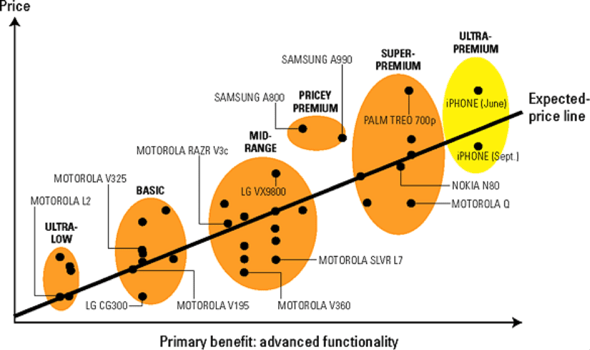CEO Blog - Advice for CEOs on growth and scaling
Why You Should Spend More Time Evaluating Your Pricing


In the end, there are three avenues to increasing your profit margins: cost, sales volume and price. In our experience, companies tend to focus on the first two, costs and sales, at the expense of the third, price. There are good reasons for this: any company that is competitive over the long term is very good at managing costs, continually measuring and reducing costs over time, and they have invested in elaborate processes and technologies just to stay in the game. Similarly, companies know their sales histories and are comfortable forecasting sales revenue, with a fair degree of precision, with mathematical models that have withstood the test of time.
In short, costs and sales revenue are continuously engineered and familiar. It is difficult to say that about price. How is it possible to ‘engineer’ the price of a product or service? Is there such a thing as pricing optimization? What data sets and mathematical models are available to develop an optimal price strategy?
At Chief Outsiders, we are frequently called upon to develop pricing methods to improve clients’ profit margins. Good pricing strategies use marketing techniques from the Chief Outsiders’ Strategy Growth Gears such as customer segmentation, market segmentation and product positioning. In this blog we would like to discuss two important tools that provide the input for these processes and get results for our clients: value attribute positioning and conjoint analysis.
Conjoint Analysis – Price strategy requires understanding buyers’ tradeoffs
Any product or service is a bundle of features, or “attributes.” Every consumer’s buying decision is based upon prioritizing these attributes, determining the value of the most important attributes (“writing off” the least important attributes) and applying that priority to the available products within a predetermined budget. As a result, any company developing a new product or service emphasizes certain attributes and de-emphasizes other attributes. The problem is: companies can sometimes place a priority upon an attribute that reflects the core competency of the company, or some other internal factor, and not consumer preferences. Imagine a mobile digital recorder with huge storage capacity and a difficult-to-use interface and you can see the problem – consumers won’t care that they can store 1000 hours of streamed data if they can’t find what they want quickly and easily, no matter the price.
This is where conjoint analysis comes in. Respondents review a list of product/service attributes, all connected to a single price, and are asked to rank and rate the list. Regression analysis is used to determine which attributes have the highest priority among all respondents. This supports pricing methods and marketing tactics that emphasize the product/service’s prioritized attribute(s).
Conjoint analysis is a realistic but straightforward survey method that captures psychological tradeoffs among individual respondents when evaluating several attributes together. The drawbacks can include the difficulty in designing a conjoint study that is effective and easy for respondents to complete. Also, it is not useful for new categories that respondents are not familiar with, because they cannot articulate priorities for products or services that are not familiar.
Competitive pricing optimization using value-attribute positioning maps
Conjoint analysis cannot be used, in and of itself, for product positioning. But conjoint data, or data from another source that allows for regression analysis to explain which attribute accounts for most of the variance in a product’s price, can be used to create a value-attribute positioning map. Once that attribute has been quantified, charting competitors’ position relative to price (Y-axis) and attribute performance (X-axis) can reveal “clusters” of price/performance tradeoffs that reflect the value consumers place on that critical attribute and the relative pricing of competitors’ products. In the example below, products above the trend line are relatively expensive and products below the line are underpriced:

[Harvard Business Review, 11/2007, “Mapping Your Competitive Position”]
The difficulty with value-attribute price mapping is that prices are highly dynamic and can change at any time (see the yellow oval in the chart above). So, in the end, the map represents only a moment in time, which may not be enough to justify developing strategic and tactical plans related to pricing.
Both of these techniques allow for pricing optimization that is data driven and engineered, as opposed to the educated guessing-game pricing often used in the real world. At Chief Outsiders, we know that although clients want to be competitive with all relevant competitors, they don’t want to leave money on the table. There are pricing methods that take the guesswork out of setting the right price for the right product and the right customer. At Chief Outsiders, a data driven price strategy is not out of reach for any company.
Topics: Pricing, Pricing Optimization, Pricing Methods, Price Strategy
Thu, Aug 13, 2015Featured Chief Outsider
/CMO-Beth-Somplatsky-Martori.jpg?width=200&height=200&name=CMO-Beth-Somplatsky-Martori.jpg)
Beth Somplatsky-Martori
- Press Releases
- Careers
- Case Studies
- Marketing Consultant Company
- Marketing Strategy Consultants
- Marketing Plan Consultants
- B2B Marketing Consultants
- Virtual CMO
- Marketing Consultant Outsourcing
- Fractional CMO
- What is a Fractional CMO
- Healthcare Marketing Consultant
- Marketing Consultant Houston TX Texas
- Marketing Consultant Texas TX
- Marketing Consultant Bay Area
- CEO Blog
- Ebooks Plus
- Executive Marketing Consultants
- Product Marketing Consultants
- B2C Marketing Consultants
- Virtual Marketing Consultants
- Senior Marketing Consultants
- Temporary CMO
- Hire a CMO
- Fractional CMO Salary
- Fractional CMO Responsibilities
- Marketing Consultant Austin TX Texas
- Marketing Consultant Dallas TX Texas
- Marketing Consultant San Antonio
- Helping Private Equity
- Private Equity Blog
- Leadership Team
- Privacy Policy
- Business Marketing Consultants
- Strategic Marketing Consultants
- Marketing Technology Consultants
- Sales and Marketing Consultants
- CMO Job Description
- CMO Salary
- Fractional CMO Agency
- Fractional CMO Services
- CPG Marketing Consultant
- Marketing Consultant San Diego
- Partners
Houston, TX 77056
© 2023 Chief Outsiders


